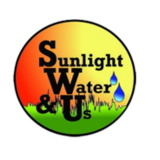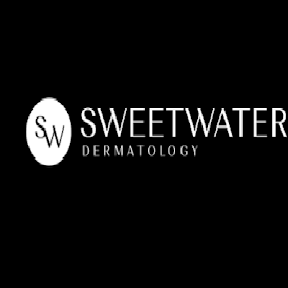Beyond the Pill: Dietary and Lifestyle Interventions for IBS in the Americas
While pharmacological treatments are crucial for managing Irritable Bowel Syndrome (IBS), a holistic approach to IBS treatment in the Americas places significant emphasis on dietary and lifestyle interventions.
https://www.marketresearchfuture.com/reports/ibs-treatment-market-5555
These strategies are often the first line of defense, empowering patients to gain control over their symptoms by understanding their triggers and adopting habits that promote gut health and overall well-being.
From meticulous dietary adjustments to stress reduction techniques, these non-pharmacological approaches form the bedrock of sustainable IBS management.
Dietary Interventions: A Personalized Approach
The concept of "one size fits all" simply doesn't apply to IBS diets. The effectiveness of dietary changes is highly individual, often requiring careful observation and guidance from a registered dietitian.
Low FODMAP Diet:
Prominence: Originating in Australia, the low FODMAP diet has gained widespread acceptance and recommendation across North and South America. It involves a structured elimination phase (typically 2-6 weeks) where foods high in fermentable oligosaccharides, disaccharides, monosaccharides, and polyols are restricted.
Mechanism: These carbohydrates are poorly absorbed in the small intestine and rapidly fermented by gut bacteria in the large intestine, leading to gas, bloating, and altered bowel habits.
Implementation: Crucially, this diet should ideally be supervised by a dietitian to ensure nutritional adequacy, proper reintroduction of foods (to identify individual triggers), and to prevent unnecessary dietary restrictions long-term. Resources and specialized dietitians offering FODMAP guidance are widely available in urban centers throughout the Americas.
Fiber Supplementation:
Type Matters: Soluble fiber (e.g., psyllium husk, found in products like Metamucil®) is generally recommended for IBS, particularly for IBS-C. It forms a gel in water, helping to soften stool and improve consistency without excessive gas.
Caution with Insoluble Fiber: Insoluble fiber (found in whole grains, many vegetables) can sometimes worsen symptoms like bloating and gas in some IBS patients.
Gradual Introduction: Regardless of type, fiber should be introduced slowly and with adequate fluid intake to avoid exacerbating symptoms.
Gluten Avoidance (in non-celiac individuals):
Controversial but Explored: While not universally recommended for all IBS patients, some individuals, even without celiac disease, report improvement in IBS-D symptoms when they reduce or eliminate gluten from their diet. This is often due to the high FODMAP content of wheat, rather than gluten itself.
Dietitian Guidance: If considering gluten avoidance, consultation with a dietitian is important to ensure nutritional balance.
Identification of Individual Triggers:
Food Diary: Encouraging patients to keep a food and symptom diary is a common practice across the Americas. This helps individuals identify personal trigger foods that may not be on a standard FODMAP list (e.g., dairy, fatty foods, spicy foods, caffeine, alcohol).
Portion Control and Regular Meals: Eating smaller, more frequent meals can sometimes be better tolerated than large meals. Eating at regular times can help regulate bowel function.
Lifestyle Modifications: A Holistic Approach to Well-being
Beyond diet, lifestyle factors significantly influence IBS symptom severity due to the intricate gut-brain axis.
Stress Management Techniques:
Mind-Body Connection: Stress and anxiety are well-known IBS triggers. Techniques like meditation, mindfulness, deep breathing exercises (e.g., diaphragmatic breathing), and progressive muscle relaxation are widely taught and encouraged. Many digital health apps and online resources support these practices.
Cognitive Behavioral Therapy (CBT) and Hypnotherapy: As discussed in a previous blog, these structured psychological therapies are increasingly recognized as powerful tools for stress reduction and gut-brain axis modulation in IBS.
Regular Physical Activity:
Benefits: Moderate, regular exercise (e.g., walking, cycling, swimming) can improve gut motility, reduce stress, and alleviate constipation. It can also improve overall mood and reduce anxiety.
Implementation: Patients are encouraged to find activities they enjoy to promote adherence.
Adequate Sleep:
Impact on Gut Health: Poor sleep quality can exacerbate IBS symptoms. Prioritizing consistent, restorative sleep is an important, though often overlooked, lifestyle intervention.
These dietary and lifestyle interventions are highly emphasized in IBS treatment guidelines throughout the Americas. While they require commitment and patience, they empower patients to actively participate in their own care, often leading to significant and sustainable improvements in symptom control and quality of life.
Beyond the Pill: Dietary and Lifestyle Interventions for IBS in the Americas
While pharmacological treatments are crucial for managing Irritable Bowel Syndrome (IBS), a holistic approach to IBS treatment in the Americas places significant emphasis on dietary and lifestyle interventions.
https://www.marketresearchfuture.com/reports/ibs-treatment-market-5555
These strategies are often the first line of defense, empowering patients to gain control over their symptoms by understanding their triggers and adopting habits that promote gut health and overall well-being.
From meticulous dietary adjustments to stress reduction techniques, these non-pharmacological approaches form the bedrock of sustainable IBS management.
Dietary Interventions: A Personalized Approach
The concept of "one size fits all" simply doesn't apply to IBS diets. The effectiveness of dietary changes is highly individual, often requiring careful observation and guidance from a registered dietitian.
Low FODMAP Diet:
Prominence: Originating in Australia, the low FODMAP diet has gained widespread acceptance and recommendation across North and South America. It involves a structured elimination phase (typically 2-6 weeks) where foods high in fermentable oligosaccharides, disaccharides, monosaccharides, and polyols are restricted.
Mechanism: These carbohydrates are poorly absorbed in the small intestine and rapidly fermented by gut bacteria in the large intestine, leading to gas, bloating, and altered bowel habits.
Implementation: Crucially, this diet should ideally be supervised by a dietitian to ensure nutritional adequacy, proper reintroduction of foods (to identify individual triggers), and to prevent unnecessary dietary restrictions long-term. Resources and specialized dietitians offering FODMAP guidance are widely available in urban centers throughout the Americas.
Fiber Supplementation:
Type Matters: Soluble fiber (e.g., psyllium husk, found in products like Metamucil®) is generally recommended for IBS, particularly for IBS-C. It forms a gel in water, helping to soften stool and improve consistency without excessive gas.
Caution with Insoluble Fiber: Insoluble fiber (found in whole grains, many vegetables) can sometimes worsen symptoms like bloating and gas in some IBS patients.
Gradual Introduction: Regardless of type, fiber should be introduced slowly and with adequate fluid intake to avoid exacerbating symptoms.
Gluten Avoidance (in non-celiac individuals):
Controversial but Explored: While not universally recommended for all IBS patients, some individuals, even without celiac disease, report improvement in IBS-D symptoms when they reduce or eliminate gluten from their diet. This is often due to the high FODMAP content of wheat, rather than gluten itself.
Dietitian Guidance: If considering gluten avoidance, consultation with a dietitian is important to ensure nutritional balance.
Identification of Individual Triggers:
Food Diary: Encouraging patients to keep a food and symptom diary is a common practice across the Americas. This helps individuals identify personal trigger foods that may not be on a standard FODMAP list (e.g., dairy, fatty foods, spicy foods, caffeine, alcohol).
Portion Control and Regular Meals: Eating smaller, more frequent meals can sometimes be better tolerated than large meals. Eating at regular times can help regulate bowel function.
Lifestyle Modifications: A Holistic Approach to Well-being
Beyond diet, lifestyle factors significantly influence IBS symptom severity due to the intricate gut-brain axis.
Stress Management Techniques:
Mind-Body Connection: Stress and anxiety are well-known IBS triggers. Techniques like meditation, mindfulness, deep breathing exercises (e.g., diaphragmatic breathing), and progressive muscle relaxation are widely taught and encouraged. Many digital health apps and online resources support these practices.
Cognitive Behavioral Therapy (CBT) and Hypnotherapy: As discussed in a previous blog, these structured psychological therapies are increasingly recognized as powerful tools for stress reduction and gut-brain axis modulation in IBS.
Regular Physical Activity:
Benefits: Moderate, regular exercise (e.g., walking, cycling, swimming) can improve gut motility, reduce stress, and alleviate constipation. It can also improve overall mood and reduce anxiety.
Implementation: Patients are encouraged to find activities they enjoy to promote adherence.
Adequate Sleep:
Impact on Gut Health: Poor sleep quality can exacerbate IBS symptoms. Prioritizing consistent, restorative sleep is an important, though often overlooked, lifestyle intervention.
These dietary and lifestyle interventions are highly emphasized in IBS treatment guidelines throughout the Americas. While they require commitment and patience, they empower patients to actively participate in their own care, often leading to significant and sustainable improvements in symptom control and quality of life.







